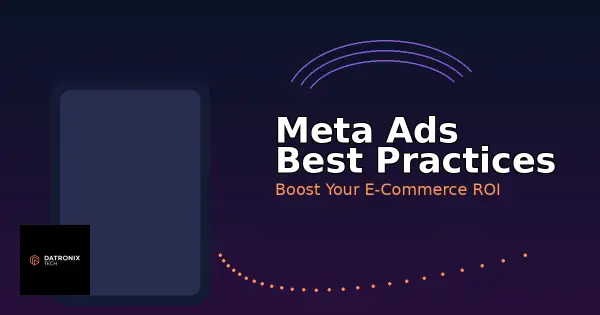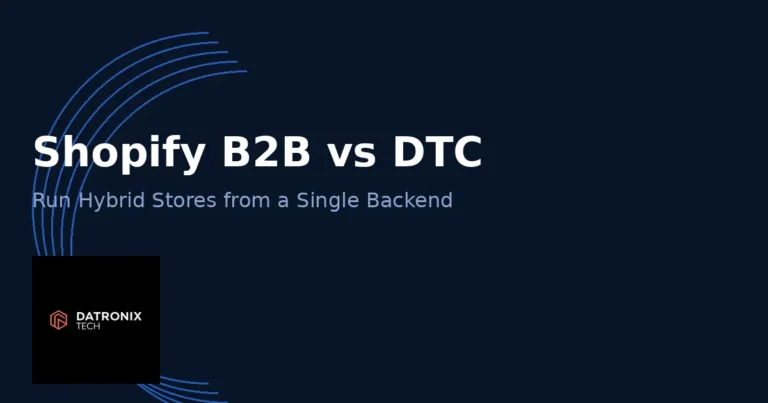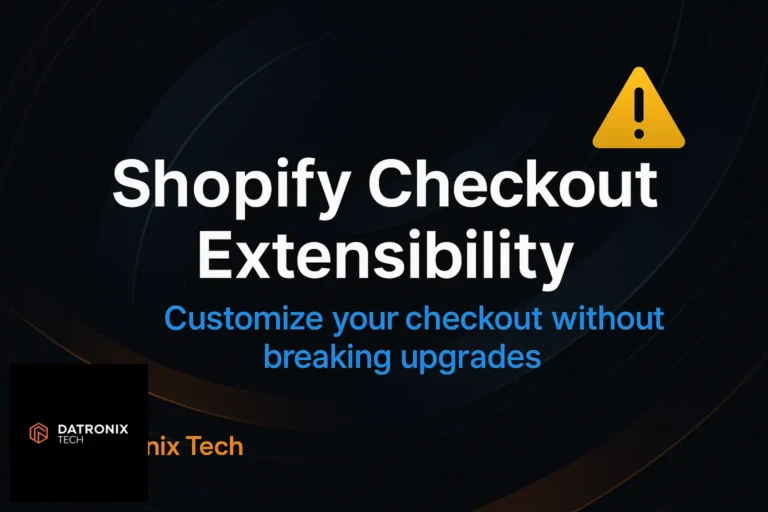Meta ads the advertising platform spanning Facebook, Instagram, Messenger and WhatsApp—remain one of the most effective ways for businesses to reach customers. With billions of people scrolling, liking and watching across Meta’s apps each day, investing in paid social ads is critical for online stores and service providers. In this guide we’ll explore meta ads best practices alongside the latest updates for 2025, showing how you can maximize your return on investment and stay ahead of competitors.
Why Meta Ads Still Matter in 2025
Massive audience: Meta’s ecosystem still boasts billions of active users. Ads appear like regular posts but with a small “Sponsored” label, making them feel native and trustworthy. You can run campaigns to drive website visits, encourage direct messages, build your brand through video or even sell products directly.
Better tools and automation: Meta continues to roll out smarter marketing tools. Automated A/B testing lets the system experiment with different images, headlines and buttons to discover what performs best. AI-driven optimization and analytics provide real‑time insights and creative suggestions to fine‑tune targeting.
New ad formats: Instagram Reels ads and short videos are particularly effective at reaching younger audiences; 15‑ to 30‑second clips feel natural in people’s feeds and grab attention quickly. Meta is also testing video ads on Threads (its Twitter‑like app) in both widescreen and square formats that autoplay in users’ feeds.
AI and personalization: Ads can now automatically build the best mix of content and placement for each user, whether it’s Reels, Stories or the News Feed. Advantage+ and Andromeda AI tools automate ad testing, optimize budgets and reduce guesswork—Meta now recommends just one to three ad sets per campaign so the AI can do the heavy lifting.
Advanced targeting: In 2025 you can target audiences based on how they behave across Facebook, Instagram, Threads, Messenger, WhatsApp and even the websites they’ve visited. New workflow tools in Ads Manager let teams assign roles, manage approvals and share ad previews.
Meta’s investment in AI, creative testing and new placements means there’s never been a better time to use the platform—whether you run a WordPress site, a Shopify store or a custom‑built application.
What’s New With Meta Ads in 2025?
The past year introduced several updates that can dramatically improve campaign performance:
Partnership Ads 2.0: Co‑branded ads now let each partner control whether their name appears in the header, so small and large brands can collaborate more comfortably.
Reels Trending Ads: Your ad can show up right next to the most popular Reels of the day, similar to TikTok’s “Pulse” placements. This format captures attention when people are already engaged with trending content.
Video Ads on Threads: Video ads have arrived on Threads in both wide (16:9) and square (1:1) formats and autoplay in the feed. This ensures your message reaches users without them having to press play.
Creator Marketplace enhancements: New filters and performance metrics help brands find the right creators based on audience type, engagement rate or content style. Meta is also launching a Creator Marketplace API that allows companies to automate how they find creators and run campaigns.
Dynamic content & placement: AI automatically combines your photos, videos and text to build the best creative and placement mix for each user. This saves time and helps campaigns perform better without extra work.
AI optimization & analytics: New tools provide real‑time insights, suggest creative edits and adjust targeting on the fly. These “Meta AI ads” learn and improve over time.
AR & 360° ads: Augmented reality and 360° video ads allow customers to interact with products by moving their phone around or virtually “trying on” items like sunglasses.
Advanced targeting options: You can now target people based on behaviour not only on Facebook and Instagram but also Threads, Messenger, WhatsApp and websites they’ve visited.
Workflow tools: Teams can assign roles, manage approvals and share ad previews within Meta Ads Manager.
Advantage+ & Andromeda AI: These systems fully automate ad testing, selecting the best images, videos, headlines and audiences in real time. Meta suggests running fewer ad sets (one to three) to let the AI optimize effectively.
Meta Ads Best Practices for High‑Performing Campaigns
Following proven creative and strategic guidelines can significantly increase your return on ad spend (ROAS):
Focus on Creative Quality
According to industry research, 70–80% of Meta ad performance in 2025 comes from the strength of your creative, not from budget or targeting. Instead of simply increasing spend, invest in compelling visuals and storytelling.
Vertical 4:5 and 1:1 formats dominate: Vertical 4:5 videos and images outperform 1:1 squares by up to 15% in Feed placements. The vertical-first design also integrates better across Stories and Reels, where immersive viewing is key. For most campaigns, 4:5 should be your default layout.
Use serious tones and clear narratives: Structured, serious scripts—such as interviews or drama‑led storytelling—deliver deeper engagement and longer watch times than playful formats. High-performing ads often start by introducing a relatable problem, then resolving it with the product.
Leverage split screens and poster layouts: Split screens (product on one side, tutorial on the other) keep viewers engaged and improve memory retention by about 12%. Poster videos—a mix of still frames and motion—boost watch time by around 18% in beauty and fashion verticals.
Add bold captions and product PNGs: Captions are essential because many users watch videos with the sound off. On‑screen subtitles help retention when videos play silently, and pop‑in product PNGs during key moments reinforce brand recall.
These meta ads best practices for creative ensure that your visuals capture attention and communicate clearly even without sound.
Tailor Content to the Platform
Meta supports multiple aspect ratios across Feeds, Stories, Reels and Messenger. Optimizing your creative for each placement ensures maximum performance. Consistent style across placements—bold captions, graphic CTAs and high‑contrast elements—helps reinforce your brand.
TikTok vs. Meta: TikTok favors trend‑driven, fast creative turnover, making it ideal for top-of-funnel awareness but short on lasting impact. Meta ads offer steadier returns thanks to robust conversion tracking and mid-to-bottom funnel strengths. For e‑commerce brands, Meta’s ability to drive sales and long-term performance is a key differentiator.
By tailoring your creative to each placement and keeping these meta ads best practices in mind, you’ll maximise engagement across every app in the Meta ecosystem.
Harness AI & Automation
Leverage Meta’s AI capabilities to save time and optimize performance:
Automated creative testing: Use Advantage+ and Andromeda AI to automatically test multiple images, videos, headlines and audiences, selecting the best combination without guesswork.
Dynamic content and placement: Let the algorithm generate the ideal combination of photos, videos and text for each user and platform.
Real-time analytics: Pay attention to real-time insights and creative suggestions, making iterative adjustments that improve results.
Combining automation with your meta ads best practices allows campaigns to scale efficiently while still delivering personalized experiences.
Use Advanced Targeting Wisely
Define your audience based on demographics, interests, behaviour and placements across Facebook, Instagram, Threads, Messenger, WhatsApp and visited websites. Retarget website visitors and add lookalike audiences to scale reach.
Remember to set up conversion tracking (Meta Pixel) on your WordPress or Shopify site so you can measure sales, leads and other conversions accurately.
When you build audiences according to these meta ads best practices, you help Meta’s algorithms find customers most likely to convert.
Collaborate with Creators & Partners
Take advantage of Meta’s enhanced Creator Marketplace to find influencers who align with your brand. Use the Marketplace API to automate outreach and management. For co‑marketing, Partnership Ads 2.0 provides flexibility in how your brand appears alongside partners.
Try New Formats
Experiment with Reels Trending Ads to piggyback on viral content. Incorporate AR and 360° experiences so customers can virtually “try on” products or explore environments.
Meta Ads Best Practices: Step‑by‑Step Guide to Launching a Campaign
The following steps apply the meta ads best practices you’ve learned and will help you launch a campaign successfully:
Define your objective – Choose the right objective in Ads Manager (e.g., conversions, traffic, messages, sales). Objectives determine how Meta optimizes your ads.
Create your audience – Use detailed targeting options (interests, demographics, behaviors) and include custom audiences (website visitors, email lists) and lookalike audiences. Decide whether to use automatic placements or specify Feed, Stories, Reels, etc.
Design your creative – Develop vertical 4:5 videos or images with strong storytelling. Add on‑screen captions and product highlights. Use split screens or poster layouts when appropriate. Test multiple variations.
Set budget and schedule – Choose daily or lifetime budgets and schedule your ads. Meta’s AI will help allocate the budget across the best‑performing ad sets.
Leverage automation – Enable Advantage+ or create test frameworks with Andromeda AI. Use dynamic content and placement features to let the algorithm build the best combination for each user.
Launch and monitor – Once your ads are live, watch real‑time performance in Ads Manager. Apply creative suggestions and adjust targeting or budgets as needed.
Iterate and scale – Each week, review results, refine your creative and targeting, and scale what works. Meta recommends keeping your ad sets concise (one to three per campaign) for optimal AI performance.
Additional Meta Ads Best Practices for Success
These extra pointers build on the meta ads best practices outlined above and will help you get even more value from your campaigns:
Comply with Meta’s advertising policies: Make sure your ads don’t violate community standards (e.g., avoid restricted content). Ad disapprovals can delay campaigns.
Install the Meta Pixel and Conversions API: Track purchases, form submissions and other conversions from your WordPress or Shopify site. This data feeds the algorithm and improves targeting.
Use UGC and authenticity: User-generated content and authentic creator videos often outperform polished commercials. Audiences value real people talking about products.
Don’t rely on one channel: Combine Meta ads with Google Ads, email marketing and SEO for a balanced digital strategy. Multi‑channel campaigns yield better overall results.
Conclusion
By following these meta ads best practices you can take full advantage of the sophisticated tools, creative options and AI‑driven optimization that Meta offers in 2025. Meta ads have become indispensable for WordPress and Shopify store owners. Focus on high‑quality creative, leverage automation and explore new formats to achieve strong returns on your advertising investment. If you’re ready to scale your paid ads strategy, Datronix Tech can help you plan, build and manage Meta campaigns that deliver measurable results.
Frequently Asked Questions
What are Meta ads? Meta ads are paid advertisements that appear across Facebook, Instagram, Messenger, WhatsApp and Threads. They look like regular posts but include a “Sponsored” label.
Are Meta ads still effective in 2025? Yes. Meta ads remain powerful because billions of people use Meta apps daily, and new tools and AI features make it easier to reach the right audience.
Should I use Reels, Stories or Feed ads? Use vertical 4:5 videos for Feeds and Stories, and try Reels for short, attention‑grabbing clips. Test multiple placements and let Meta’s algorithm optimize for you.
How much do Meta ads cost? Costs vary depending on your audience size, objective and competition. You can start with a small daily budget and scale as you see results. The AI tools help allocate budget efficiently.
How do I track results? Install the Meta Pixel and Conversions API on your website. Use Ads Manager to monitor metrics like click‑through rate (CTR), cost per acquisition (CPA) and return on ad spend (ROAS). Real‑time analytics provide insights and creative suggestions.





